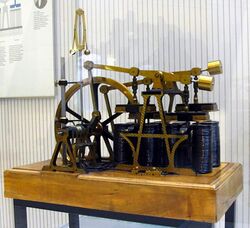| Display title | Physics:Reciprocating electric motor |
| Default sort key | Reciprocating electric motor |
| Page length (in bytes) | 6,339 |
| Namespace ID | 3020 |
| Namespace | Physics |
| Page ID | 634363 |
| Page content language | en - English |
| Page content model | wikitext |
| Indexing by robots | Allowed |
| Number of redirects to this page | 0 |
| Counted as a content page | Yes |
| Page image |  |
| HandWiki item ID | None |
| Edit | Allow all users (infinite) |
| Move | Allow all users (infinite) |
| Page creator | imported>Rtexter1 |
| Date of page creation | 04:26, 5 February 2024 |
| Latest editor | imported>Rtexter1 |
| Date of latest edit | 04:26, 5 February 2024 |
| Total number of edits | 1 |
| Recent number of edits (within past 90 days) | 0 |
| Recent number of distinct authors | 0 |
Description | Content |
Article description: (description)
This attribute controls the content of the description and og:description elements. | A reciprocating electric motor is a motor in which the armature moves back and forth rather than circularly. Early electric motors were sometimes of the reciprocating type, such as those made by Daniel Davis in the 1840s. Today, reciprocating electric motors are rare but they do have some niche applications... |

